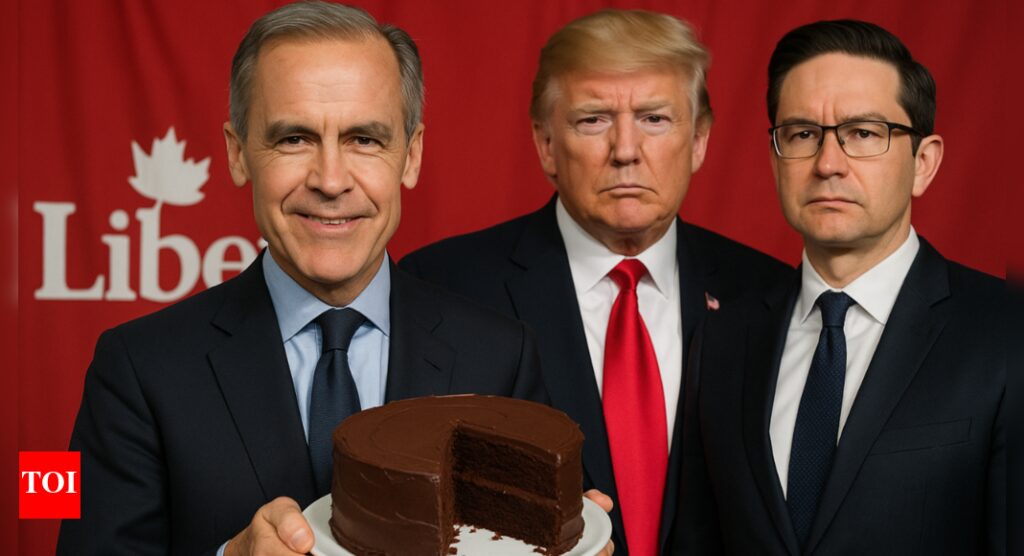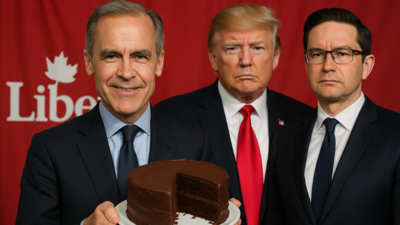Mark Carney strong, yet just short: How Liberals fell short after a stunning comeback in Canada polls

Before polls opened on April 28, Mark Carney had already staged a remarkable comeback. In mid-January, the Conservatives held a commanding 27-point lead over the Liberals. But by election night, Carney’s party had surged to 168 seats, just four shy of the 172 needed for a majority. Some projections, including one by EKOS on April 27, had even forecast the Liberals crossing that crucial threshold.
In the event, however, they fell four seats short. A late-campaign softening of President Trump’s anti-Canada rhetoric helped narrow Carney’s early advantage and allowed Pierre Poilievre’s Conservatives to close the gap to a mere two percentage points in the popular vote.
Julie Simmons of the University of Guelph, while speaking to TimesofIndia.com, argues that the fading of outside pressure and Canada’s voting system explain why a once-likely majority didn’t happen.
A majority in sight
By the final week of campaigning, national trackers regularly showed the Liberals polling around 44 per cent to the Conservatives’ 39 per cent.
Julie Simmons believes Carney’s credentials fuelled that surge: “It was in large part to the coalescing of support around the new leader (Carney), who seemed more qualified, as a former Bank of Canada governor, than the career politician (Conservative leader, Pierre Poilievre) to take on Donald Trump and counter the President’s musings about Canada becoming the 51st state. Carney’s message of ‘Canada Strong’ resonated with anxious voters.”
Trump’s tonal shift tightens the contest
Yet just as the Liberals appeared poised for a slim majority, the external threat that underpinned Carney’s appeal began to recede. Simmons notes that after a private phone call between Carney and Trump, the US president largely dropped his public threats against Canada.
“Poilievre returned to his messages about being tough on crime, increasing housing supply, and offering tax cuts to Canadians. Some voters were more receptive to these messages because the chaos south of the border seemed muted,” Simmons said.
A Reuters poll on 24 April showed the race tightening to within 3.6 points as domestic issues reclaimed prominence. Without the drumbeat of tariffs and annexation talk, voters drifted back towards Conservative-style platforms enough to clip Carney’s majority hopes.
Parliamentary arithmetic
When the final count was announced, the Liberals led the popular vote by only 43 per cent to 41 per cent, a margin too slim to translate into a majority under first-past-the-post. Their slightly more “efficient” vote distribution yielded a 10–15 seat edge over the Conservatives, but still left Carney four seats short of the 172-seat mark.
As Simmons explains, “Were the campaign to have continued for a week or two more, it is possible that the gap between Poilievre and Carney would have narrowed entirely, and we may have had a Conservative minority government.”
What a minority government for Carney means
Economists Jimmy Jean and Randall Bartlett at Desjardins told Reuters that a confirmed Liberal minority will force Carney into negotiations with opposition parties, especially the New Democratic Party, to enact his agenda.
“If a minority Liberal win is confirmed, Prime Minister Mark Carney will need to negotiate with the opposition parties to implement his policy agenda,” they said. “In terms of executing the Liberal Party platform, this configuration could lean toward the social and cultural measures, and against broad tax cuts and fossil-fuel development.”
Charu Chanana, chief investment strategist at Saxo in Singapore, warned that political fragmentation could limit fiscal stimulus just as Canada faces rising recession risks and tougher US trade talks. “Canada’s likely Liberal minority outcome adds to uncertainty at a delicate time,” she said
With 168 seats to the Conservatives’ 144, Carney must now navigate a minority parliament. He is expected to seek confidence and supply support from the NDP and Bloc Québécois, and to shepherd through priorities such as reducing interprovincial trade barriers, refining immigration levels and diversifying Canada’s trade portfolio beyond the United States.
In the end, Carney’s “Canada Strong” message helped the Liberals claw back from a polling disaster, but not quite to a majority. Voters endorsed his crisis-management credentials, yet showed they remain deeply responsive to domestic concerns once external threats fade.






